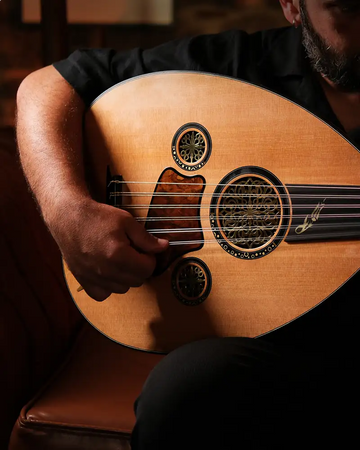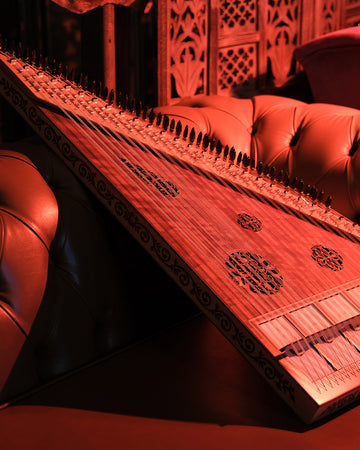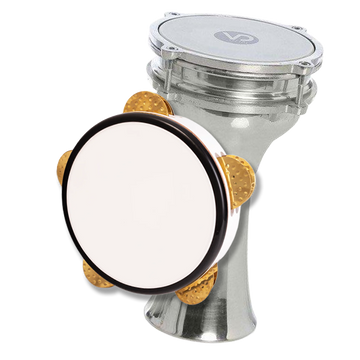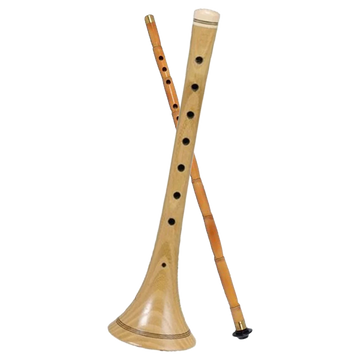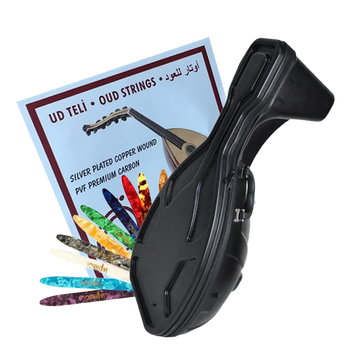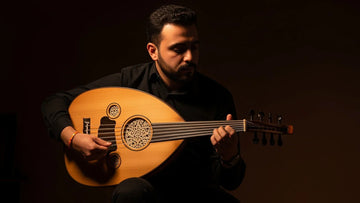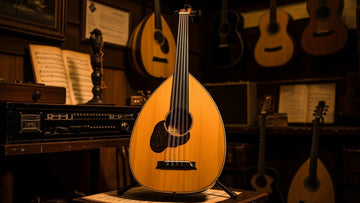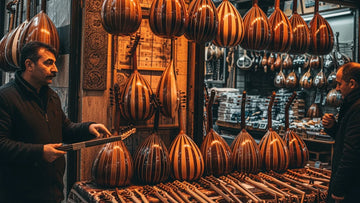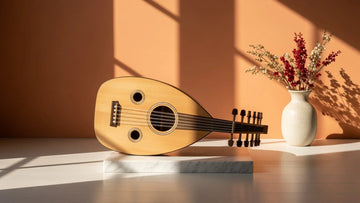The Turkish oud is a fretless pear-shaped stringed instrument. It is used in traditional Turkish and Mediterranean music. The Turkish oud is an exotic instrument that dates back to the Egyptian pyramids. The unique sound of this oud is special for every listener, eastern or western. The strings of the Turkish oud are similar to the classical guitar. Playing this oud requires precise intonation. The plectrum used to play the Turkish oud is called the "mizrab" and is held in the right hand. This plectrum is long and fits in the palm of your hand.
The body, the number of strings, and the thresholds are the shape differences of the ouds. Oud can be determined in terms of its structure and various features. The difference in Turkish oud structure and sound is significant. Please continue reading our article for detailed information on the subject.

Formation and Frequency of Sound in Turkish Oud
To play the oud instrument, you need to start with the tuning, as with almost every musical instrument. The tuner and pegs on the oud reeds are used for the tuning method.
The important detail you need to pay attention to when using a plectrum is that you should keep it parallel to the strings of the oud. In addition, while playing the oud, you should direct your wrist with up and down movements. These wrist movements that you will do while playing the oud are very important. The activities you will find difficult at first will become easier with practice. You will get used to it and become better at playing the oud in time. Thus, you can play the oud according to the notes.

Structure of the Turkish Oud
The structure of the oud used in Turkey is not different from that used in other countries. The round breast holes of Turkish and Arab, Persian, Armenian, and Greek ouds are decorated with roses. Except for a few minor changes, the oud has preserved its present form for about a thousand years.
The oud chest is a uniform layer of fibrous spruce wood, about 1 mm thick. The arrangement of the balconies is significant for the sound velocity of the instrument.
In the past, winding wires were used as wire, beam, silk inside, and silver wire outside. Today, nylon wires have replaced beam wires. Some masters played the oud with plectrums made of hardened leather or cherry bark. Plastic plectrums are used today.

What is special about Turkish oud?
The Turkish oud is still a preferred instrument these days, as it is effective in terms of its characteristics and can sound in different octaves. In addition, Turkish ouds are the kinds of oud used in Turkey and Greece. The contemporary Turkish oud is a six-fret oud: it has five pairs and an additional sixth bass string. This extra string allows the instrument to create a more extensive fret range. It also increases the ease of playing by permitting the performer to navigate between three octaves.

It is estimated that the Turkish oud, one of the oldest stringed instruments, was made in ancient Egypt (1320-1085 BC). An instrument similar to a Turkish oud is depicted on one of the clay reliefs from this period. Presumably, this oud was carved from a single piece of wood, just like the old oud, and its body was smaller than today's oud.
It is among the famous instruments in Iran, Azerbaijan, Armenia, and Greece. It is believed that the first instrument similar to the oud was made in ancient Egypt during the dynasties.
The history of the oud was not well known until its re-emergence in the Muslim Middle East centuries later. Like the old oud, this new oud was probably carved from a single piece of wood, with a smaller body than today's oud and a more bottomless chest.
The word oud was first used in VII. century in Arabic texts. It is known that Farabi played the oud and made some changes to the instrument. The most important of these is the fifth string, which the lute adds to its four strings tuned at quarter intervals. After, the oud was played with a wooden plectrum. Today, plectrums are usually made of flexible plastic.
Although it has been used in various periods, the oud, which was definitely among the classical Turkish music instruments in the second half of the 19th century, has been played in different styles by many virtuosos today.

How to care for your Turkish oud?
Oud care is essential for the longevity of the oud instrument and its sound quality. For this reason, after playing the oud, you must follow a maintenance routine before putting it back in its box. First, you should wipe the areas exposed to sweat with a dry and soft cloth. The areas that need to be cleaned are the chest and body areas where the right arm touches and the handle and keyboard areas where the left-hand fingers touch. The reason for wiping sweat is that sweat causes oxidation and rapid wear on the wires.
After these processes are completed, put your oud in its box. If you do not put it in the box, you would prefer to leave it in a place where your home or environment does not receive moisture, and the air is neither hot nor cold. Also, do not leave it in front of heaters, stoves, and air conditioners.
When traveling in extreme weather conditions, protect it by wrapping it in a suitable cheesecloth or fabric before putting it in the box. All this, keep your chord along with your oud instrument.
The chest area may turn yellow over time due to oxidation. Therefore, first of all, do not wipe it with any cleaning material. Then get help from a lute master if necessary.
Likewise, it would help if you did not interfere with the body part with varnish or similar materials. This type of oud care requires expert service. Especially be careful not to spill oil and similar liquid substances on the chest area.
In case of a problem with the strings in oud pegs, do not wet them and insert them back into their sockets so that the pegs stay dry and expand. Also, since the oud is unpolished, the player's hands must be clean. The oud should be in a different environment with direct sunlight. If it is in humid climates, the soundboard of the oud will swell, and the strings will come closer to the keyboard, resulting in a crackling sound. In addition, daily care can be made using lemon oil.
As Sultan Instrument, we have discussed what you need to know about the Turkish oud in this article. Our goal is to reduce costs and hassles for our valued customers and to present the best instruments worldwide. You can visit our website for detailed information about our products.
You may also like: Turkish Oud
